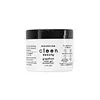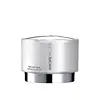What's inside
What's inside
 Key Ingredients
Key Ingredients

No key ingredients
 Benefits
Benefits

 Concerns
Concerns

No concerns
 Ingredients Side-by-side
Ingredients Side-by-side

Water
Skin ConditioningIsononyl Isononanoate
EmollientGlycerin
HumectantXylitylglucoside
HumectantAnhydroxylitol
HumectantXylitol
HumectantSodium Polyacrylate
AbsorbentDimethicone
EmollientCitrus Paradisi Peel Oil
MaskingCitrus Reticulata Fruit
Skin ConditioningCitrus Aurantium Dulcis Peel Oil
MaskingCitrus Aurantium Bergamia Fruit Oil
MaskingCaprylyl Glycol
EmollientPolymethylsilsesquioxane
Lauryl Dimethicone/Polyglycerin-3 Crosspolymer
CleansingTrideceth-6
EmulsifyingEthylhexylglycerin
Skin ConditioningCyclopentasiloxane
EmollientBis-PEG-18 Methyl Ether Dimethyl Silane
EmollientPhenoxyethanol
PreservativePEG/PPG-18/18 Dimethicone
EmulsifyingWater, Isononyl Isononanoate, Glycerin, Xylitylglucoside, Anhydroxylitol, Xylitol, Sodium Polyacrylate, Dimethicone, Citrus Paradisi Peel Oil, Citrus Reticulata Fruit, Citrus Aurantium Dulcis Peel Oil, Citrus Aurantium Bergamia Fruit Oil, Caprylyl Glycol, Polymethylsilsesquioxane, Lauryl Dimethicone/Polyglycerin-3 Crosspolymer, Trideceth-6, Ethylhexylglycerin, Cyclopentasiloxane, Bis-PEG-18 Methyl Ether Dimethyl Silane, Phenoxyethanol, PEG/PPG-18/18 Dimethicone
Phyllostachys Bambusoides Juice
Skin ConditioningButylene Glycol
HumectantAlcohol
AntimicrobialHydrogenated Polyisobutene
EmollientCyclopentasiloxane
EmollientGlycerin
HumectantBiosaccharide Gum-1
HumectantCyclohexasiloxane
EmollientDimethicone
EmollientCetearyl Alcohol
EmollientTrehalose
HumectantCamellia Sinensis Leaf Extract
AntimicrobialOpuntia Coccinellifera Fruit Extract
Skin ConditioningGlycine Soja Seed Extract
Skin ConditioningNelumbo Nucifera Flower Extract
Skin ConditioningPanax Ginseng Root Extract
EmollientGinkgo Biloba Leaf Extract
Skin ConditioningZingiber Officinale Root Extract
MaskingGlycyrrhiza Glabra Root Extract
BleachingXylitol
HumectantAnhydroxylitol
Humectant1,2-Hexanediol
Skin ConditioningGlyceryl Stearate
EmollientSodium Polyacrylate
AbsorbentSucrose Stearate
EmollientSilica
AbrasiveEthylhexylglycerin
Skin ConditioningXylitylglucoside
HumectantWater
Skin ConditioningCaprylyl Glycol
EmollientPolysilicone-11
Propylene Glycol
HumectantPEG-40 Stearate
EmulsifyingPEG-5 Rapeseed Sterol
CleansingPPG-5-Laureth-5
EmollientHydrogenated Lecithin
EmulsifyingHydrogenated Polydecene
EmollientCarbomer
Emulsion StabilisingTromethamine
BufferingDisodium EDTA
Phenoxyethanol
PreservativeParfum
MaskingCI 42090
Cosmetic ColorantPhyllostachys Bambusoides Juice, Butylene Glycol, Alcohol, Hydrogenated Polyisobutene, Cyclopentasiloxane, Glycerin, Biosaccharide Gum-1, Cyclohexasiloxane, Dimethicone, Cetearyl Alcohol, Trehalose, Camellia Sinensis Leaf Extract, Opuntia Coccinellifera Fruit Extract, Glycine Soja Seed Extract, Nelumbo Nucifera Flower Extract, Panax Ginseng Root Extract, Ginkgo Biloba Leaf Extract, Zingiber Officinale Root Extract, Glycyrrhiza Glabra Root Extract, Xylitol, Anhydroxylitol, 1,2-Hexanediol, Glyceryl Stearate, Sodium Polyacrylate, Sucrose Stearate, Silica, Ethylhexylglycerin, Xylitylglucoside, Water, Caprylyl Glycol, Polysilicone-11, Propylene Glycol, PEG-40 Stearate, PEG-5 Rapeseed Sterol, PPG-5-Laureth-5, Hydrogenated Lecithin, Hydrogenated Polydecene, Carbomer, Tromethamine, Disodium EDTA, Phenoxyethanol, Parfum, CI 42090
Ingredients Explained
These ingredients are found in both products.
Ingredients higher up in an ingredient list are typically present in a larger amount.
This ingredient is created from dehydrating xylitol in acidic conditions. Xylitol is a famous sugar and humectant.
Much like its predecessor, anhydroxylitol is a humectant. Humectants attract and hold water to moisturize the skin.
This ingredient is most commonly found in a popular trio called Aquaxyl. Aquaxyl is made up of anhydroxylitol (24 - 34%), xylitylglucoside (35 - 50%), and xylitol (5 - 15%).
According to a manufacturer, Aquaxyl is known for a 3-D hydration concept and an anti-dehydration shield to reinforce the outer layer of skin.
This ingredient is often derived from plants such as wood and sugarcane.
Learn more about AnhydroxylitolCaprylyl Glycol is a humectant and emollient, meaning it attracts and preserves moisture.
It is a common ingredient in many products, especially those designed to hydrate skin. The primary benefits are retaining moisture, skin softening, and promoting a healthy skin barrier.
Though Caprylyl Glycol is an alcohol derived from fatty acids, it is not the kind that can dry out skin.
This ingredient is also used as a preservative to extend the life of products. It has slight antimicrobial properties.
Learn more about Caprylyl GlycolCyclopentasiloxane, or D5, is a silicone used to improve texture of products and trap moisture.
D5 is considered lightweight and volatile. Volatile means it evaporates quickly after application. Once evaporated, D5 leaves a thin barrier that helps keep skin hydrated.
It is also an emollient. Emollients help soften the skin and prevent water loss. Silicones create a silky texture in products. D5 helps other ingredients become more spreadable.
Studies show D5 is safe to use in skincare products. We recommend speaking with a skincare professional if you have concerns.
Learn more about CyclopentasiloxaneDimethicone is a type of synthetic silicone created from natural materials such as quartz.
What it does:
Dimethicone comes in different viscosities:
Depending on the viscosity, dimethicone has different properties.
Ingredients lists don't always show which type is used, so we recommend reaching out to the brand if you have questions about the viscosity.
This ingredient is unlikely to cause irritation because it does not get absorbed into skin. However, people with silicone allergies should be careful about using this ingredient.
Note: Dimethicone may contribute to pilling. This is because it is not oil or water soluble, so pilling may occur when layered with products. When mixed with heavy oils in a formula, the outcome is also quite greasy.
Learn more about DimethiconeEthylhexylglycerin (we can't pronounce this either) is commonly used as a preservative and skin softener. It is derived from glyceryl.
You might see Ethylhexylglycerin often paired with other preservatives such as phenoxyethanol. Ethylhexylglycerin has been found to increase the effectiveness of these other preservatives.
Glycerin is already naturally found in your skin. It helps moisturize and protect your skin.
A study from 2016 found glycerin to be more effective as a humectant than AHAs and hyaluronic acid.
As a humectant, it helps the skin stay hydrated by pulling moisture to your skin. The low molecular weight of glycerin allows it to pull moisture into the deeper layers of your skin.
Hydrated skin improves your skin barrier; Your skin barrier helps protect against irritants and bacteria.
Glycerin has also been found to have antimicrobial and antiviral properties. Due to these properties, glycerin is often used in wound and burn treatments.
In cosmetics, glycerin is usually derived from plants such as soybean or palm. However, it can also be sourced from animals, such as tallow or animal fat.
This ingredient is organic, colorless, odorless, and non-toxic.
Glycerin is the name for this ingredient in American English. British English uses Glycerol/Glycerine.
Learn more about GlycerinPhenoxyethanol is a preservative that has germicide, antimicrobial, and aromatic properties. Studies show that phenoxyethanol can prevent microbial growth. By itself, it has a scent that is similar to that of a rose.
It's often used in formulations along with Caprylyl Glycol to preserve the shelf life of products.
Sodium Polyacrylate is the sodium salt of polyacrylic acid. It is used as an absorber, emollient, and stabilizer.
This ingredient is a super-absorbent polymer - meaning it can absorb 100 to 1000 times its mass in water. As an emollient, Sodium Polyacrylate helps soften and soothe skin. Emollients work by creating a barrier to trap moisture in. This helps keep your skin hydrated.
Water. It's the most common cosmetic ingredient of all. You'll usually see it at the top of ingredient lists, meaning that it makes up the largest part of the product.
So why is it so popular? Water most often acts as a solvent - this means that it helps dissolve other ingredients into the formulation.
You'll also recognize water as that liquid we all need to stay alive. If you see this, drink a glass of water. Stay hydrated!
Learn more about WaterXylitol is a humectant and prebiotic. It can help with dry skin.
In studies, xylitol has been shown to improve dry skin. It decreased transepidermal water loss, or when water passes through the skin and evaporates. Xylitol also showed to help improve the biomechanical properties of the skin barrier.
The prebiotic property of xylitol may also help reinforce our skin's natural microbiome. Having a healthy microbiome prevents infection by bad bacteria and helps with hydration.
As a humectant, Xylitol helps draw moisture from both the air and from deeper skin layers. This helps keep skin hydrated.
Xylitol is a sugar alcohol and commonly used as a sugar substitute. It is naturally occurring in plants such as strawberries and pumpkin.
Learn more about XylitolXylitylglucoside is created from xylitol and glucose, two humectants.
Not surprisingly, this ingredient is also a humectant. It attracts and holds water in your skin, helping to maintain hydration.
This ingredient is most commonly found in a popular trio called Aquaxyl. Aquaxyl is made up of anhydroxylitol(24 - 34%), xylitylglucoside (35 - 50%), and xylitol (5 - 15%).
According to a manufacturer, Aquaxyl is known for a 3-D hydration concept and an anti-dehydration shield to reinforce the outer layer of skin.
Learn more about Xylitylglucoside